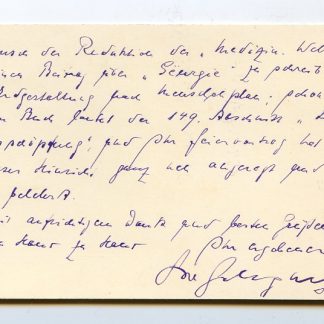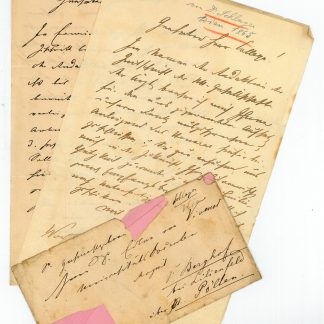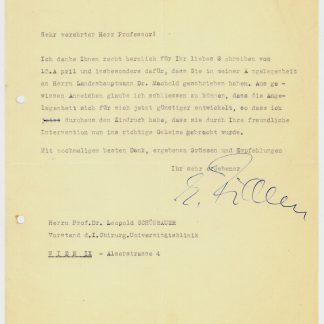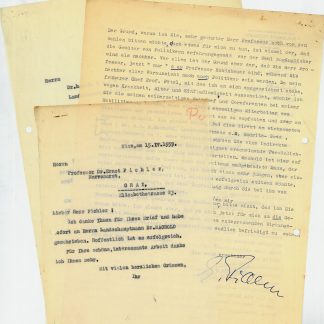Typed letter signed ("C. G. Jung").
4to (295 x 209 mm). 1 page. In English. On headed stationery.
€ 3,500.00
To the British neuroscientist John Raymond Smythies (1922-2019): an early letter on synchronicity.
Jung apologises for his reply to Smythies coming so late; he has been unwell, "I get so many letters that I’m completely swamped" and he wanted to reply to this one personally as it was highly interesting to him. "You obviously try to elucidate a problem which I have been very much concerned with these last years, although I didn’t approach it in the way you do. I merely tried to collect all the empirical data showing the psychical relativity of space as well as of time. The peculiar phenomena we observe in connection with archetypal numinosity, termed as synchronicity, belong to this category. My approach is, as you see, entirely inductive, as I’m a bit afraid of deduction in such delicate matters like psychophysical relations". Jung adds that he has written an essay, "Synchronicity as a Principle of A-Causal Connections", which is being published with a paper by Pauli, "the well-known physicist, who deals with the archetypal foundations of Kepler's astronomy".
The term "synchronicity" was first coined by Jung in the late 1920s but it was only after collaborating with Wolfgang Pauli to refine his concept - which Jung defined as the acausal connection of two or more psychic and physical phenomena - that it was formally introduced to the scientific community in 1952 with their joint publication, 'The Interpretation of Nature and the Psyche'. Smythies letter pre-empts the publication of both Jung and Pauli’s essay and their book on the subject.
The British neuropsychiatrist, neuroscientist and neurophilosopher Smythies developed the first specific biochemical theory of schizophrenia; his research was inspired by the remarkable effects of mescaline on the human brain and the interdisciplinary work of Albert Schweitzer. Jung directs his letter to Smythies at the Atkinson Morley Hospital in Wimbledon: founded in 1869, it became one of the most advanced brain surgery centres in the world in the 20th century, and was involved in the development of the CT scanner in the 1970s.
Provenance: Sotheby's, 21 November 1989, lot 281.
One correction in ink.






